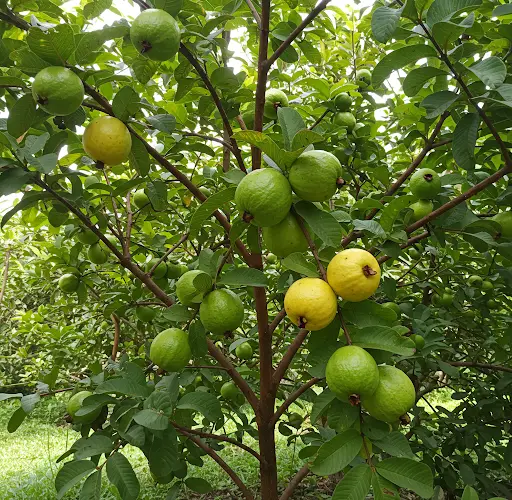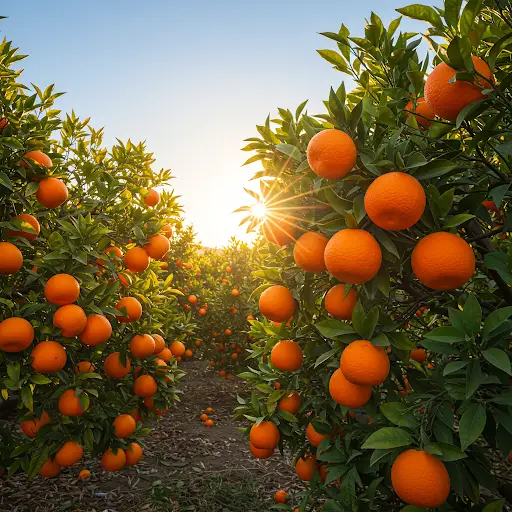If you have a guava tree that isn’t producing any fruit despite your efforts with pruning and fertilization, this simple but effective fertilization technique can help. This method is especially beneficial if your guava tree has not yet blossomed or has trouble producing fruit. I want to share how I managed to get this guava tree, which is just over a year old, to flower and bear fruit.
Here’s how to improve your guava’s growth and fruit production with just a few natural ingredients that you can find at home or at your local farm store.
The Right Fertilization Method
The first thing to know is that you should never apply the fertilizer directly to the trunk or roots of the tree. Instead, you need to prepare a small trench around the base of the tree to place the fertilizers. This ensures that the nutrients will gradually reach the roots as they are needed.
Materials You’ll Need:
-
10 liters of well-decomposed cow manure: If you don’t have cow manure, alternatives like worm castings, chicken manure, or horse manure can work, though cow manure is preferred for guava trees.
-
500 grams of wood ash: The ash is very important for guavas, as it helps enhance fruit sweetness. Simply burn some firewood and store the ashes for use.
-
100 grams of pure urea: Urea is a nitrogen-rich fertilizer that helps promote strong leaf growth. If your tree is young or newly planted, use only 50 grams to avoid overwhelming it with nitrogen. For mature trees that have been in the ground for a year or more, use the full 100 grams.
How to Apply the Fertilizer
Once you’ve gathered the necessary materials, it’s time to prepare your guava tree for fertilization. Start by digging a shallow trench around the base of the tree. Make sure it’s wide enough to hold all of the fertilizers but not so deep that it touches the tree’s roots directly.
Add all of the ingredients—cow manure, wood ash, and urea—into the trench and mix them together. After placing the fertilizers, cover the trench back with soil and water thoroughly. This watering step is crucial, especially with urea, as it needs moisture to break down and become effective.
How Often Should You Apply the Fertilizer?
For best results, apply this fertilization mix every three months. You can also supplement with lighter fertilizers, such as compost or organic liquid fertilizers, between these applications. These lighter applications can be done monthly to maintain the health and vitality of the tree.
Keep in mind that fertilization alone won’t guarantee good fruit production. There are a couple of other essential factors to consider:
Sunlight Is Key
Guava trees need full sunlight to thrive and produce high-quality fruit. If your tree is planted in a shaded area, it may produce smaller fruit or even fail to produce fruit at all. Ensure that your guava tree is placed in a spot where it will receive plenty of direct sunlight each day.
Pruning Is Necessary
Just like all fruit trees, guava trees need to be regularly pruned to ensure healthy growth and encourage fruiting. Prune dead or damaged branches and shape the tree to allow air circulation and sunlight penetration. Regular pruning stimulates the tree to produce flowers and, consequently, fruit.
Additional Tips for Healthy Guava Fruit
-
Pests and Disease: If your guava tree is infested with pests, particularly those that damage the fruit, lack of proper nutrition is often the underlying cause. Regular fertilization, especially with calcium and organic matter, can help prevent pest attacks.
-
Avoid Damaging the Tree: Be careful when handling your guava tree, as damaging the bark or branches can create openings for pests and diseases. Avoid hitting or cutting into the tree unnecessarily.
Enjoying the Results
After following this fertilization method and ensuring that your tree receives the right amount of sunlight and care, you should begin to see significant improvement in your guava tree’s growth and fruit production. Within a few months, you’ll notice flowers appearing, followed by delicious, healthy guavas.
Guava trees are relatively easy to grow once you understand their needs. With the right fertilization and care, your tree can produce bountiful fruit season after season. By using this natural and cost-effective method, you’ll be able to enjoy fresh guavas from your garden all year long.



